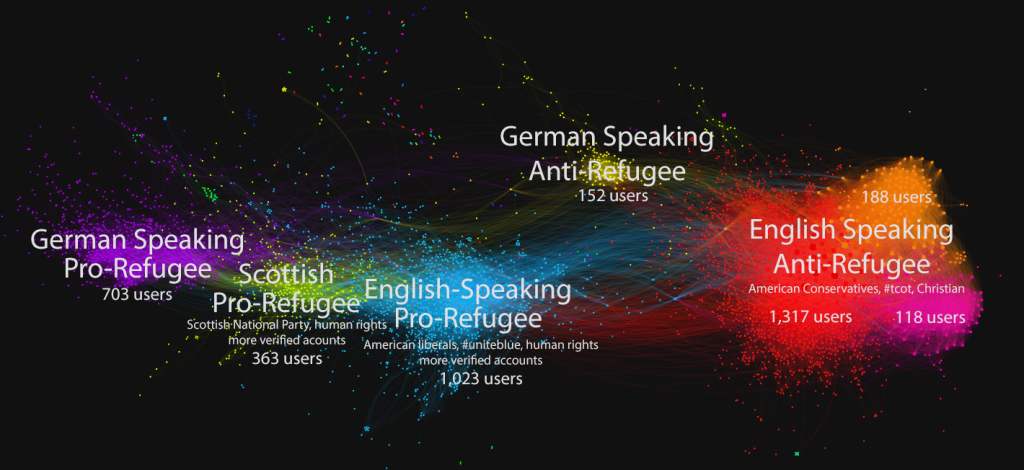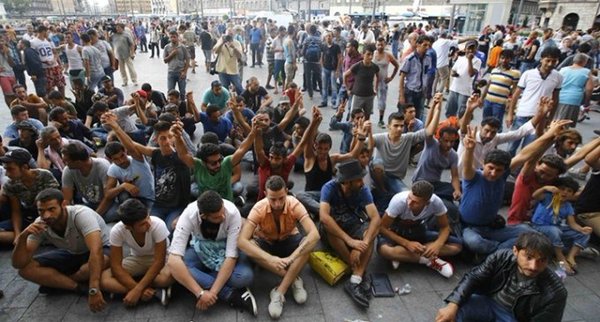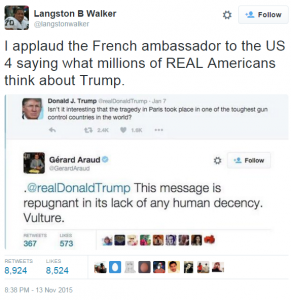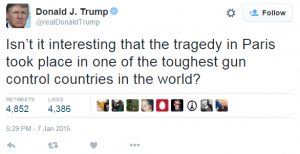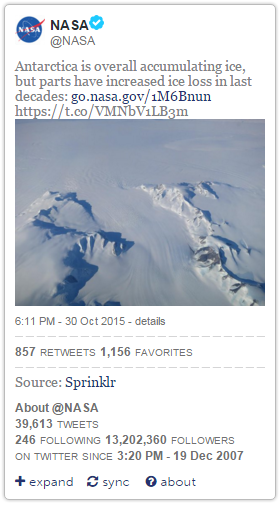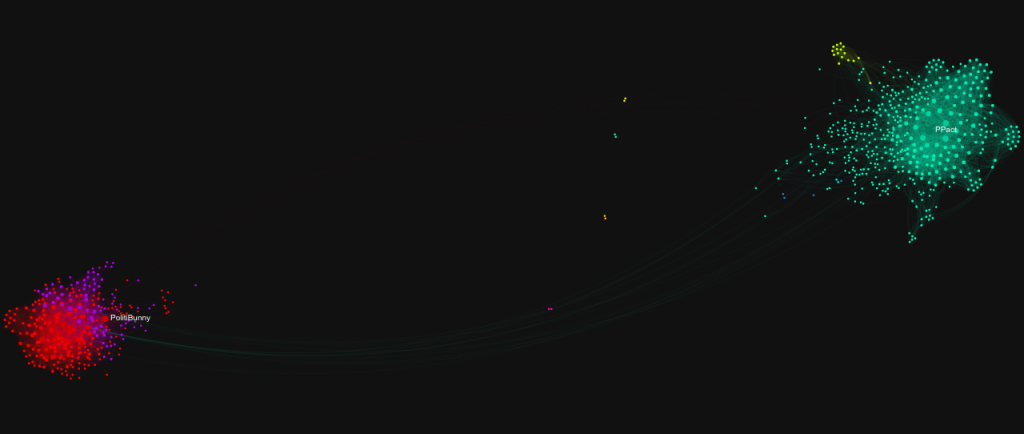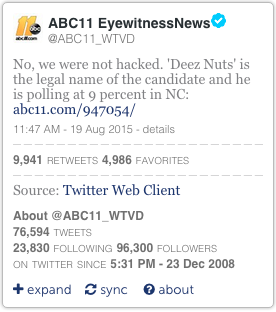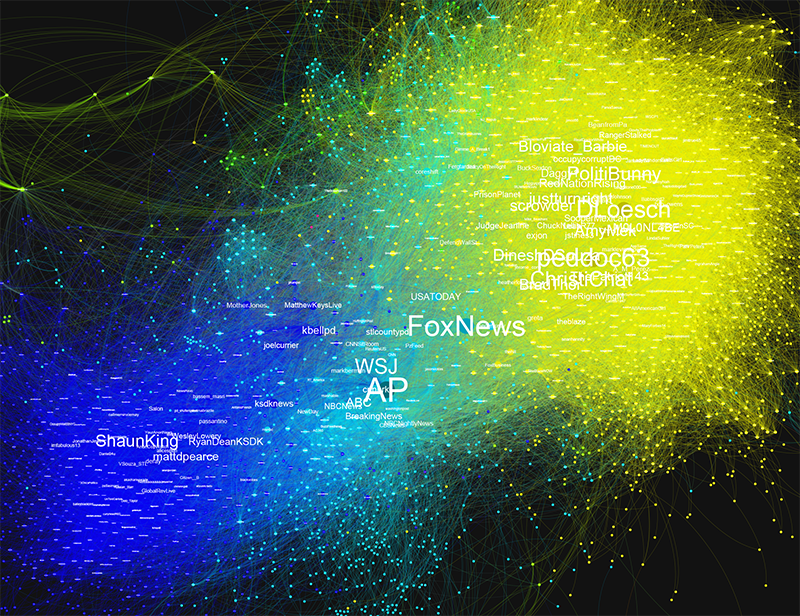Since the Paris attacks in November, 2015, social media has become increasingly polarized and emotional when it comes to discussing the refugee crises. On the 18th, the hashtag #RefugeesWelcome was trending on Twitter in the US. The co-retweeted network visualizes just how polarized and international the debate is.

On the left are three pro-refugee groups, differentiated by language and location. The purple group is largely German; the green are Scottish, many identifying with the Scottish National Party; and the blue are American liberals. On the right are four groups spreading anti-refugee messages. In yellow, another group of Germans; the red, orange and pink groups are all English speaking, mostly American, with similar messages and identifying themselves with terms like #tcot and “christian.”
The co-retweeted network graph is interactive on TwitterTrails, and includes a widget below the graph where you can view aggregated statistics on each group, including user languages, most used words in descriptions and most used hashtags.
You can explore this network on TwitterTrails:
http://twittertrails.wellesley.edu/~trails/stories/investigate.php?id=984767780
Comparison with past usage
#RefugeesWelcome was also trending on September 3rd, in reaction to the images of the body of a drowned Syrian toddler, Alyan Kurdi, washed up on a Turkish beach. At this time, the network was not polarized, and although there are different groups shown they are mainly spreading the pro-refugee message.
Continue reading Twitter’s increasing polarization about the refugee crisis via #RefugeesWelcome
